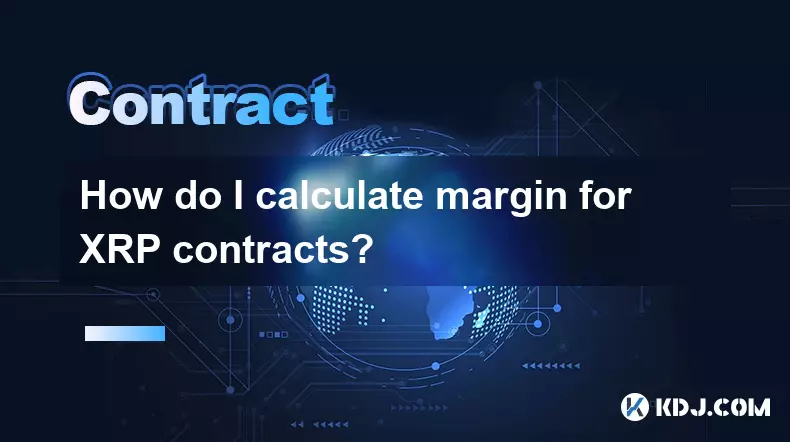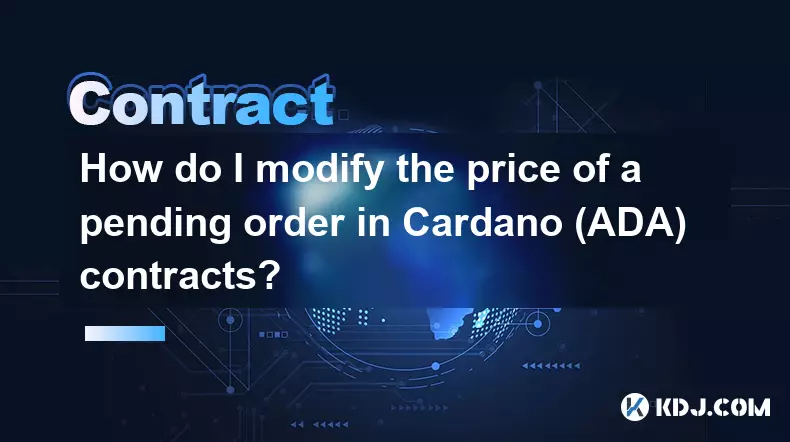-
 bitcoin
bitcoin $109667.069529 USD
-3.03% -
 ethereum
ethereum $3936.685804 USD
-4.07% -
 tether
tether $1.000493 USD
0.01% -
 xrp
xrp $2.771823 USD
-4.74% -
 bnb
bnb $957.805027 USD
-5.34% -
 solana
solana $196.735100 USD
-6.68% -
 usd-coin
usd-coin $0.999727 USD
-0.01% -
 dogecoin
dogecoin $0.227355 USD
-5.12% -
 tron
tron $0.335205 USD
-0.81% -
 cardano
cardano $0.779256 USD
-3.59% -
 ethena-usde
ethena-usde $0.999900 USD
-0.06% -
 hyperliquid
hyperliquid $42.492095 USD
-6.61% -
 chainlink
chainlink $20.501853 USD
-4.34% -
 avalanche
avalanche $28.952606 USD
-11.21% -
 stellar
stellar $0.356038 USD
-3.93%
How do I calculate margin for XRP contracts?
In XRP futures trading, margin acts as collateral for leveraged positions, with requirements varying by leverage, volatility, and whether contracts are inverse or linear.
Sep 26, 2025 at 12:01 am

Understanding Margin in XRP Futures Trading
1. Margin in cryptocurrency derivatives, particularly XRP contracts, refers to the collateral required to open and maintain a leveraged position. Traders deposit margin into their accounts to absorb potential losses on open trades. The amount is typically expressed as a percentage of the total contract value. For example, if a platform offers 10x leverage, the required initial margin would be 10% of the position size.
2. There are two primary types of margin: initial margin and maintenance margin. Initial margin is what you must put up to enter a trade. Maintenance margin is the minimum equity that must remain in your account to keep the position open. If your account balance drops below this threshold due to adverse price movements, a margin call or liquidation may occur.
3. Exchanges calculate margin differently depending on whether the contract is inverse or linear. Inverse futures, common for XRP on platforms like BitMEX or Bybit, are denominated in USD but settled in XRP. This means your margin balance fluctuates not only with price changes in the contract but also with volatility in XRP’s market value.
4. To determine the initial margin for an inverse XRP contract, use the formula: Initial Margin = (Position Size in USD) / (Leverage × Contract Price in XRP). Suppose you open a $10,000 position at 5x leverage with XRP priced at $0.50. Your margin in XRP would be ($10,000 / 5) / $0.50 = 4,000 XRP.
Factors Influencing XRP Margin Requirements
1. Leverage plays a central role in margin calculation. Higher leverage reduces the amount of capital needed upfront but increases risk exposure. A 25x leveraged position requires only 4% of the contract value as margin, making it highly sensitive to price swings.
2. Market volatility directly affects margin policies. During periods of high volatility—common in XRP due to regulatory news or macroeconomic events—exchanges may increase margin requirements or reduce maximum leverage to mitigate systemic risk.
3. Funding rates in perpetual contracts impact effective margin usage. While not part of the initial margin calculation, ongoing funding payments can erode equity over time, indirectly affecting available margin and increasing the likelihood of liquidation.
4. The denomination of the contract matters. Linear contracts use stablecoins or fiat as margin, so fluctuations in XRP price don’t alter the margin value. In contrast, inverse contracts require holding XRP as collateral, exposing traders to additional asset-specific risk.
Risk Management and Margin Calculation Tools
1. Most derivative exchanges provide built-in margin calculators. These tools allow traders to input variables such as contract size, leverage, entry price, and stop-loss levels to estimate required margin and potential liquidation points.
2. Liquidation price is closely tied to margin levels. It represents the price at which your position will be automatically closed due to insufficient margin. For long positions in inverse contracts, the formula is: Liquidation Price = Entry Price / (1 - (Maintenance Margin Rate / Leverage)).
3. Traders should monitor their margin ratio, defined as (Wallet Balance / Maintenance Margin) × 100%. When this falls below 100%, the position becomes vulnerable to liquidation. Some platforms display this as a health indicator next to open positions.
4. Cross-margin and isolated-margin modes affect how margin is allocated. In cross-margin mode, all available balance serves as collateral, reducing liquidation risk but potentially endangering the entire account. Isolated margin limits exposure to a predefined amount, offering more control over risk per trade.
Frequently Asked Questions
How does XRP price volatility affect my margin balance?If you're using XRP as collateral in an inverse contract, a drop in XRP's price reduces the USD value of your margin, increasing the chance of liquidation even if the contract price hasn't moved significantly against you.
Can I add more margin after opening a position?Yes, most platforms allow margin top-ups. Increasing your margin manually lowers your effective leverage and pushes the liquidation price further from the current market price, enhancing position stability.
What happens when my XRP contract gets liquidated?Upon liquidation, the exchange closes your position to prevent further losses. A portion of your margin may be used to cover fees or auction costs, especially on peer-to-peer derivative platforms. You lose the remaining margin allocated to that trade.
Do different exchanges calculate XRP margin the same way?No. While core principles remain consistent, implementation varies. Binance, OKX, and Bybit each have unique formulas for maintenance margins, fee structures, and insurance fund mechanisms, leading to differences in liquidation behavior and margin efficiency.
Disclaimer:info@kdj.com
The information provided is not trading advice. kdj.com does not assume any responsibility for any investments made based on the information provided in this article. Cryptocurrencies are highly volatile and it is highly recommended that you invest with caution after thorough research!
If you believe that the content used on this website infringes your copyright, please contact us immediately (info@kdj.com) and we will delete it promptly.
- AlphaTON's Bold Bet: Toncoin, Balance Sheets, and the Future of Digital Treasuries
- 2025-09-27 04:45:15
- Crypto Kidnapping in Minnesota: A New York Minute Breakdown of the $8 Million Heist
- 2025-09-27 04:25:14
- Avalanche, RUVI, and the Altcoin Rush: What's Fueling the Fire?
- 2025-09-27 04:25:14
- Optimism's Breakdown: Navigating Support Zones for the Next Move
- 2025-09-27 04:45:15
- Linea Price Surges as SWIFT Pilots Blockchain Messaging: A New Era for Global Payments?
- 2025-09-27 04:50:01
- Dogecoin Price Prediction & Crypto Buy: Navigating the Meme Coin Maze
- 2025-09-27 04:50:01
Related knowledge

How do I enable the "scalping-only" mode for Cardano (ADA) contracts?
Sep 24,2025 at 03:19am
Understanding Scalping Strategies in Crypto Derivatives1. Scalping in cryptocurrency trading refers to executing multiple short-term trades within min...

What is the maximum position limit for Cardano (ADA) contracts?
Sep 23,2025 at 11:00pm
Understanding ADA Futures and Derivatives Market Structure1. Cardano (ADA) futures contracts are offered by several major cryptocurrency derivatives e...

What is the maker fee for Cardano (ADA) contracts?
Sep 26,2025 at 09:01am
Understanding Maker Fees in Cardano (ADA) Contracts1. The concept of maker fees applies broadly across decentralized exchanges and smart contract plat...

How can I view open interest in Cardano (ADA) contracts?
Sep 24,2025 at 07:36am
Understanding Open Interest in Cardano Derivatives1. Open interest refers to the total number of outstanding derivative contracts, such as futures or ...

How do I modify the price of a pending order in Cardano (ADA) contracts?
Sep 27,2025 at 01:00am
Understanding Pending Orders in Cardano Smart Contracts1. Cardano operates on a proof-of-stake blockchain that supports smart contracts through its Pl...

What is the function of the insurance fund in Cardano (ADA) contracts?
Sep 24,2025 at 02:18am
Understanding the Role of Insurance Funds in Cardano Smart Contracts1. The insurance fund within Cardano's ecosystem is not a native feature directly ...

How do I enable the "scalping-only" mode for Cardano (ADA) contracts?
Sep 24,2025 at 03:19am
Understanding Scalping Strategies in Crypto Derivatives1. Scalping in cryptocurrency trading refers to executing multiple short-term trades within min...

What is the maximum position limit for Cardano (ADA) contracts?
Sep 23,2025 at 11:00pm
Understanding ADA Futures and Derivatives Market Structure1. Cardano (ADA) futures contracts are offered by several major cryptocurrency derivatives e...

What is the maker fee for Cardano (ADA) contracts?
Sep 26,2025 at 09:01am
Understanding Maker Fees in Cardano (ADA) Contracts1. The concept of maker fees applies broadly across decentralized exchanges and smart contract plat...

How can I view open interest in Cardano (ADA) contracts?
Sep 24,2025 at 07:36am
Understanding Open Interest in Cardano Derivatives1. Open interest refers to the total number of outstanding derivative contracts, such as futures or ...

How do I modify the price of a pending order in Cardano (ADA) contracts?
Sep 27,2025 at 01:00am
Understanding Pending Orders in Cardano Smart Contracts1. Cardano operates on a proof-of-stake blockchain that supports smart contracts through its Pl...

What is the function of the insurance fund in Cardano (ADA) contracts?
Sep 24,2025 at 02:18am
Understanding the Role of Insurance Funds in Cardano Smart Contracts1. The insurance fund within Cardano's ecosystem is not a native feature directly ...
See all articles










































































